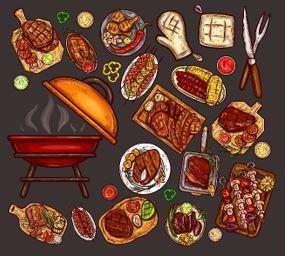Though the practice of setting off fireworks on Independence Day dates back to the first celebration of the holiday in 1777, cookouts did not become a part of the party until the mid-twentieth century.
Today a cookout is considered the quintessential way to celebrate the Fourth of July. It is as much a celebration of “traditionally American” food as it is a celebration of our country’s independence. According to the American Farm Bureau Federation, holding a cookout on the fourth this year will be less costly, by a small margin, than it has been in previous years.
A quarterly Farm Bureau survey report, part of their annual and larger Marketbasket Survey which tracks “retail food price trends and overall affordability," revealed that the cost of an average summer cookout for ten people in 2018 totals $5.51 per person. 96 Farm Bureau members in 28 different states served as “volunteer shoppers” in this informal survey, checking retail prices of various food items at local grocery stores for the "average cookout:" hot dogs and cheeseburgers along with buns, pork spare ribs, potato salad, baked beans, corn chips, lemonade, chocolate milk, ketchup, mustard and watermelon.
Michigan Farm Bureau Livestock Specialist Ernie Birchmeier said that the results of the survey aligned with federal numbers: “The year-to-year direction of the Farm Bureau market-basket survey tracks closely with the federal government’s Consumer Price Index report for food at home."
The total cookout price is down by only 63 cents from last year, but the change serves as evidence of greater happenings in the world of agriculture. According to Farm Bureau Director of Market Intelligence Dr. John Newton, lower consumer retail prices can be attributed, in part, to the larger volumes of dairy and meat production in 2018. Milk production is anticipated to reach 218 billion pounds by the end of the year and basic economic principles tell us that a surplus for a given commodity results in a fall in prices. Greater competition in the meat sector has resulted in the consumer benefit of lower prices.
So it's good for Americans overall but actually bad for farmers.
“This is a very tough time for farmers and ranchers due to low prices across the board,” said Dr. Newton. “It is appropriate that this very painful situation hitting farmers be reflected at the retail level as well.”




